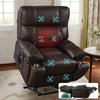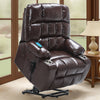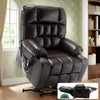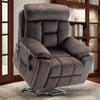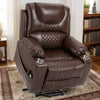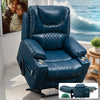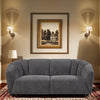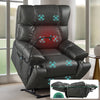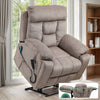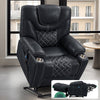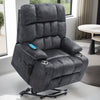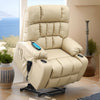The Importance of Mobility in the Elderly Population
The Direct Impact of Mobility on Quality of Life
Mobility plays a crucial role in the overall well-being of seniors. It affects their ability to perform daily tasks and maintain independence. Good mobility allows older adults to stay active, engage in social activities, and enjoy life to the fullest. It also helps prevent isolation and depression, which are common issues among the elderly.

Reduced mobility can lead to a decline in physical health and mental well-being. It may cause seniors to become more dependent on others for basic needs. This loss of independence can be frustrating and demoralizing. Maintaining mobility is key to preserving dignity and self-esteem in later years.
How Power Lifting Chairs Contribute to Elderly Mobility
Power lifting chairs are innovative devices that greatly enhance mobility for seniors. These chairs provide assistance in standing up and sitting down, which can be challenging for older adults. By offering smooth and controlled movement, they reduce the risk of falls and injuries.
Power lift chairs enable seniors to move more freely in their homes. This increased mobility allows them to perform daily activities with ease. Tasks like getting up to use the bathroom or reaching for items become safer and more manageable. As a result, seniors can maintain their independence and continue living in their own homes for longer.
Understanding Power Lifting Chairs: Mechanisms and Benefits
The Basic Mechanism of Power Lifting Chairs
Power lifting chairs use an electric motor to change positions. They can recline, lift, and tilt forward to assist the user in standing up. The chair's movement is controlled by a simple remote or built-in buttons. This allows seniors to adjust the chair's position with minimal effort.

The lifting mechanism works by tilting the entire chair forward and upward. This motion gently brings the user to a near-standing position. It reduces the strain on joints and muscles, making it easier for seniors to stand up. The smooth operation ensures a safe and comfortable transition from sitting to standing.
Key Features of High-Quality Power Lifting Chairs
High-quality power lifting chairs offer several important features. These include:
- Multiple position settings for comfort
- Durable construction for long-term use
- Easy-to-use controls for simple operation
- Battery backup for use during power outages
- Soft, supportive cushioning for extended sitting
- Heat and massage options for added comfort
- Pockets and holders for storage of personal items
These features enhance the user experience and provide additional benefits beyond mobility assistance. They contribute to overall comfort and convenience for seniors using the chairs.
How Power Lifting Chairs Support Elderly Mobility
Power lifting chairs support elderly mobility in several ways. They provide a stable base for sitting and standing, reducing the risk of falls. The chairs' lifting mechanism assists in transitions, making it easier for seniors to get up and move around. This support can help maintain muscle strength and joint flexibility.
By making movement easier, power lift chairs encourage seniors to stay active. They can stand up more frequently without fear of falling or struggling. This increased activity helps maintain overall health and prevents the decline often associated with prolonged sitting. Power lifting chairs thus play a vital role in promoting independence and mobility for seniors.
Implementing Power Lifting Chairs in the US Care Industry
Best Practices for Integrating Power Lifting Chairs in Senior Facilities
Integrating power lifting chairs in senior facilities requires careful planning and implementation. Best practices include:

- Conducting individual assessments to determine specific needs
- Providing proper training for staff and residents on chair use
- Ensuring regular maintenance and safety checks of the chairs
- Placing chairs in strategic locations for easy access
- Encouraging consistent use to maximize benefits
It's important to involve healthcare professionals in the selection and placement of power lift chairs. They can help ensure that the chairs meet the specific needs of each resident. Regular feedback from users and staff can help improve the implementation process over time.
The Economic Advantages of Power Lifting Chairs for Long-Term Care
Power lifting chairs offer significant economic advantages for long-term care facilities. They can reduce the need for staff assistance in basic mobility tasks. This allows caregivers to focus on other important aspects of resident care. The chairs also help prevent falls, potentially lowering healthcare costs associated with injuries.
By promoting independence, power lift chairs may delay the need for more intensive care. This can result in cost savings for both facilities and residents. The initial investment in these chairs is often offset by reduced labor costs and improved resident outcomes. Long-term care facilities may see improved efficiency and resource allocation with the use of power lifting chairs.
Case Studies: Successful Use of Power Lifting Chairs in the United States
Several case studies highlight the successful use of power lifting chairs in US senior care facilities. One study in a Florida retirement community showed a 30% reduction in fall-related injuries after introducing power lift chairs. Residents reported increased confidence in moving around their living spaces.
Another case study in a Midwest nursing home found that power lifting chairs improved resident satisfaction. The chairs allowed more seniors to participate in social activities, leading to better mental health outcomes. Staff members noted a decrease in the physical strain of assisting residents with mobility.
A third example comes from an assisted living facility in California. They integrated power lifting chairs as part of a broader mobility program. The result was a 25% increase in resident independence for daily activities. This led to higher overall satisfaction scores for both residents and their families.
These case studies demonstrate the positive impact of power lifting chairs on senior care. They show improvements in safety, independence, and quality of life for residents. The success stories provide valuable insights for other facilities considering the implementation of power lifting chairs.








